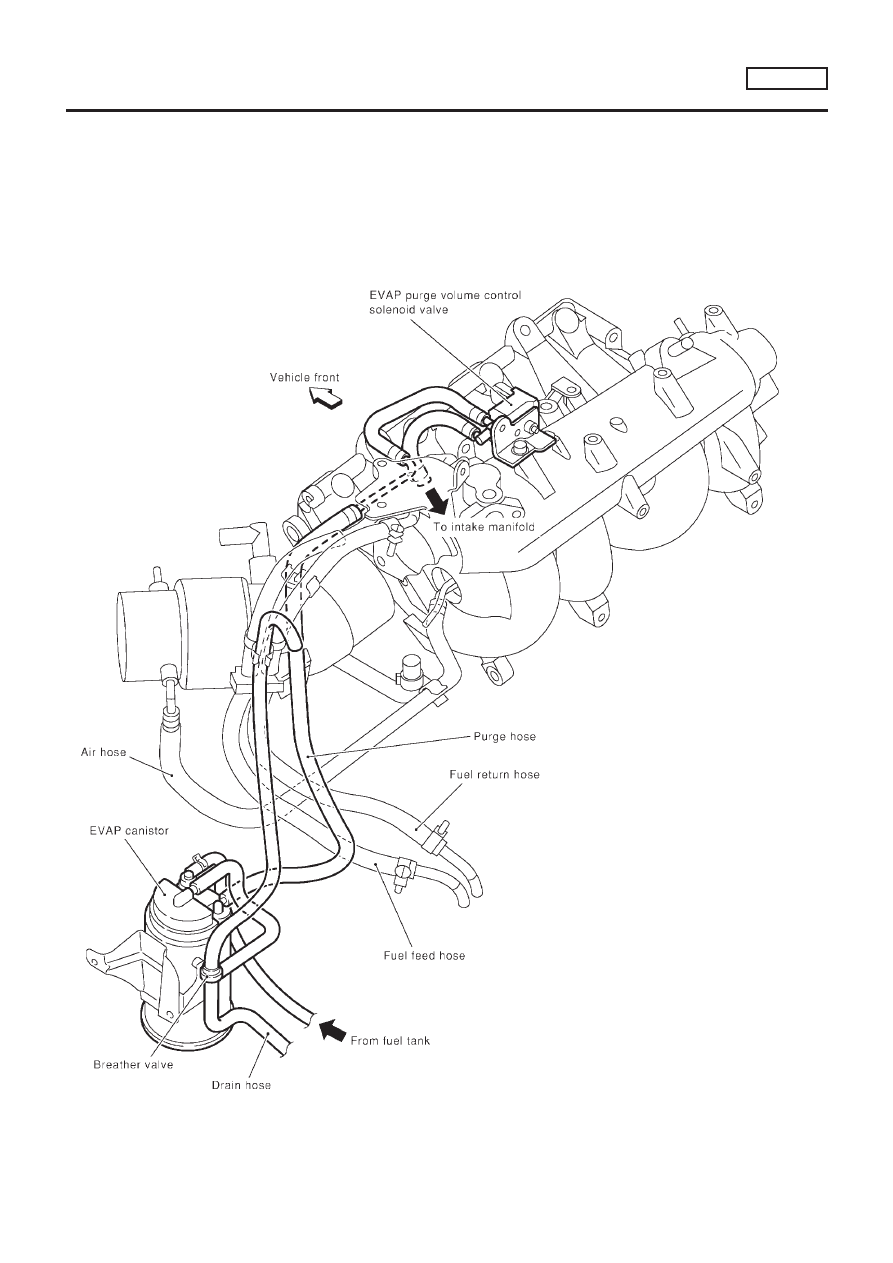Nissan Almera Tino V10 (2001 year). Manual - part 30

EVAPORATIVE EMISSION LINE DRAWING
=NLEC0020
NOTE:
Do not use soapy water or any type of solvent while installing vacuum hoses or purge hoses.
SEF600Y
ENGINE AND EMISSION BASIC CONTROL SYSTEM
DESCRIPTION
QG18DE
Evaporative Emission System (Cont’d)
EC-41